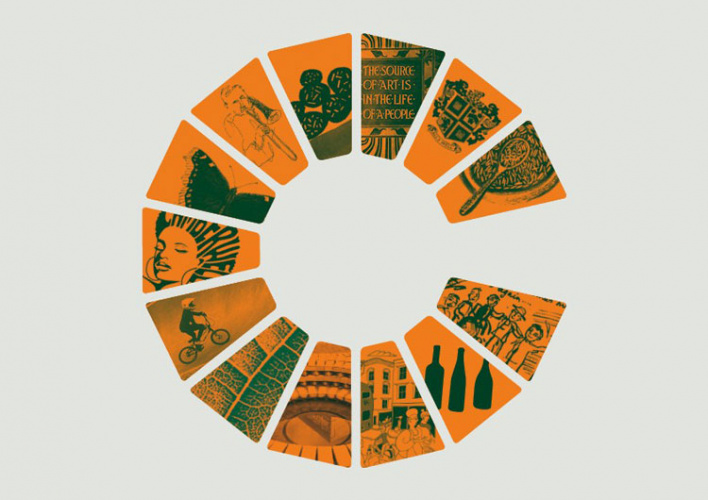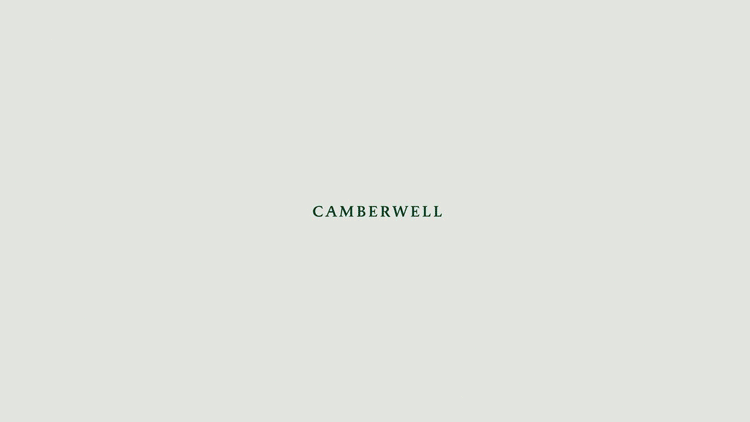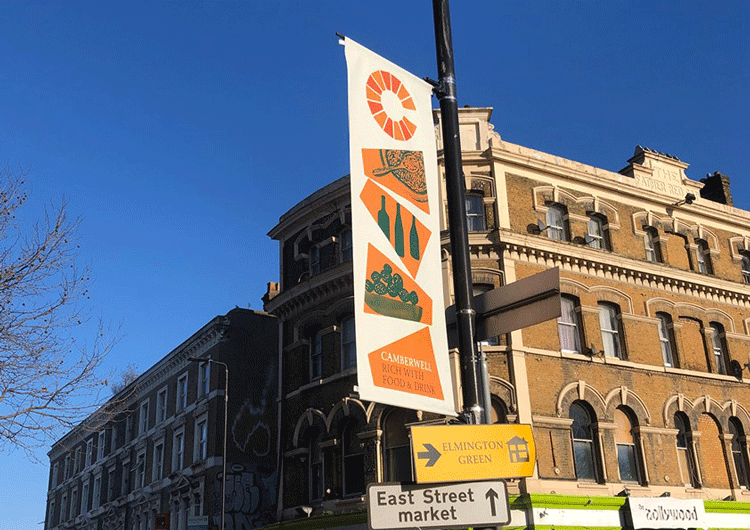Camberwell adopts “distinct, relevant” new identity
Aiming to stand out from the likes of Peckham, Brixton and Dulwich, Studio Sutherland has designed a new identity for the south London area centring around the “Camberwell Brick”.
The south east London district of Camberwell has unveiled a new area identity. Aiming to distinguish what residents feel is an often-overlooked part of the capital, the project has been led by London-based designers at Studio Sutherland.
Inspired by a well on the Camberwell coat of arms, the new identity centres around the “Camberwell Brick”.

“Reflecting a collective community”
Local to the Camberwell area, Studio Sutherland was chosen by the Camberwell Identity Group, a organisation of residents leading the identity, to work on the project. “They wanted a team that knew the area they were working with,” says studio founder Jim Sutherland.
“As soon as we were given the project, we knew we wanted to do something that reflected a collective community,” he adds. The Camberwell Brick motif, Sutherland says, acts as a metaphor for the area, with each brick representing a different element of the community.
According to the Camberwell Identity Group, these elements represent local’s “favourite aspects of Camberwell”, including its community, creativity, green spaces and food and drink.
As well as providing a versatile visual system that can be used to highlight different aspects of the area, when “built” the bricks also mark out a “C”.

“The typeface chose itself”
Beyond the brick visual system, a typeface created by late Monotype designer and former Camberwell resident Berthold Wolpe has been adopted. During his life, Wolpe designed the Albertus typeface used widely on London’s road signs. He also taught at the Camberwell School of Art, before being appointed a Royal Designer for Industry in 1959.
“We’d actually been using Albertus for another project, and were familiar with Wolpe’s work,” says Sutherland. “And then when we met with the Camberwell Identity Group they suggested Wolpe as he had previously lived in the area.
“So really, the typeface (Wolpe’s ‘Pegasus’) chose itself – we think it’s great extra local detail to the project.”

Moving forward
The project has largely been community led. The lamppost banners on which the identity can be found on Camberwell’s Denmark Hill were crowdfunded by local businesses, which was then matched with £6,500 from the Mayor of London.
“We really want the people of Camberwell to get behind this identity, we’re keen not to be the ones leading this,” says Sutherland, adding that the design team are issuing “a sort of call for entries” from residents to submit further images they think should be part of the identity.
Plans to extend the identity to more touchpoints are in the works, Sutherland says. “There are lots of artisans in the area, which we believe can really get involved,” he says. These could likely include murals, school activity packs and even physical Camberwell Bricks.
Sutherland says: “The banners are just the start.”







I really like this identity. Very simple, effective and classic graphics (almost retro and reminiscent of Edward Bawden or Eddie Pond). Also reminds me slightly of the logo for Shakespeare’s Globe which was a missed opportunity in terms of application and I still read as a very rough looking letter ‘O’. At least this is C for Camberwell.